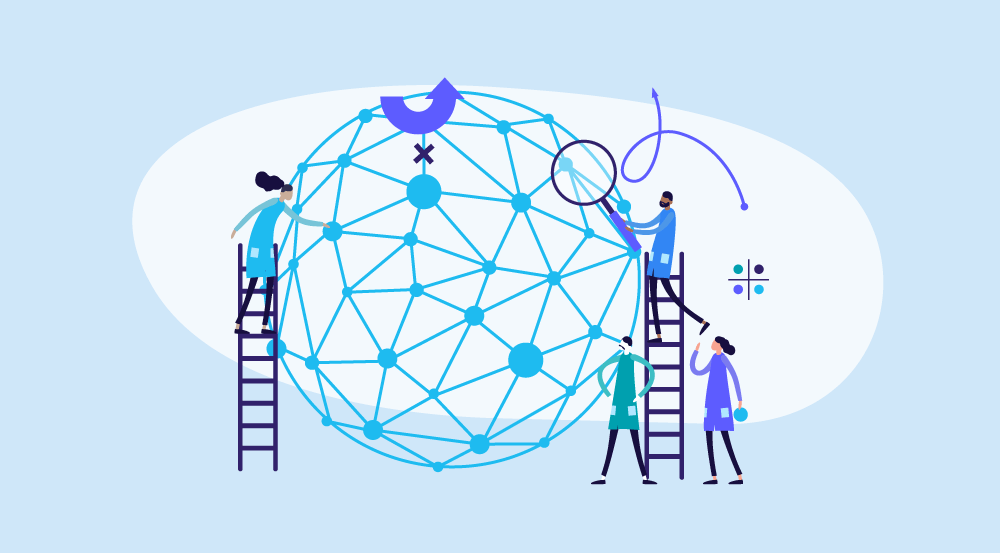A sustainable workforce is the backbone of any thriving nation.
It’s a platonic relationship with different dynamics between the employees and the employers, where both sides have to work together to harness a culture of productivity, optimal performance, and overall diversity.
The Saudi workforce is no different.
Keying in line with the Vision 2030 project, companies from all over have joined hands to develop a sustainable workforce that’d eventually contribute to the entire region’s infrastructure.
Increase in Labor Force Participation
Moreover, according to the latest report by the General Authority for Statistics (GASTAT), in the second quarter of 2022, there was a rise in the labor force participation rate of Saudi Arabia, reaching 51.8%, up from the 50.1% recorded in the preceding quarter.
In addition, the findings are in line with the goals set out in the Vision 2030 blueprint, which aims to reduce the overall unemployment rate in the country, and harness the participation of potential female citizens towards workforce diversity factor, and vice versa.
Rise in Workforce Participation Among Female Citizens
To that end, the GASTAT report highlights the rise in workforce participation among female citizens.
It states that the participation rate among Saudi females has increased by 2.4 percentage points year on year in the first quarter of 2023.
Currently, the participation rate stands at 36 percent, which is unchanged from the previous quarter of 2022.
This post aims to elaborate on the workforce sustainability factors to give you a better overview and mindset of the dynamics associated with it.
Furthermore, we’ll look into the essential pillars of workforce sustainability to elaborate on the concept.
Let’s get started.
What is Work Sustainability?
So what is a sustainable workforce?
Work sustainability refers to the ability to maintain or support a process continuously.
In business and policy contexts, the main goal of sustainability is to prevent the depletion of natural or physical resources.
The idea is to ensure that these resources remain available for the long term.
When we talk about sustainability, we often look at three core concepts: economic, environmental, and social.
Businesses and governments around the world have made commitments to sustainable goals.
These goals include reducing their environmental footprints and conserving resources.
Many companies are now actively embracing sustainability investments, also known as "green investments."
However, there’s a small number of skeptics who accuse some companies of "greenwashing."
Greenwashing is the practice of misleading the public to make a business seem more environmentally friendly than it actually is.
This can create a false impression and undermine real efforts toward sustainability.
Now that we know what is a sustainable workforce, let’s have a look at how it can be created.
How Is a Sustainable Workforce Created?
While 90% of corporate executives consider sustainability to be significant, merely 60% of enterprises have implemented a strategy for sustainability.
Creating a workforce that is sustainable involves fostering an open and supportive workplace where employees feel comfortable sharing their workload, personal lives, skills, and aspirations.
Line managers are crucial in this process, as they should have a flexible approach that is reflected throughout the entire company.
Technology can also play a role in understanding the workforce better.
HR teams can utilize marketplace tools to help employees map out their career goals and find opportunities for growth within the organization.
Investing in training and development is another essential aspect of creating a workforce.
It not only keeps employees engaged but also allows for career progression.
To go beyond traditional training methods, organizations can leverage technology to offer a wide range of reskilling and upskilling opportunities.
Providing employees with the autonomy to choose courses they are interested in can also empower them to take control of their own development.
Understanding the skills gap within the organization is vital for identifying whether additional training is necessary or if new talent needs to be attracted.
Regular review meetings with staff members can help gauge morale and identify areas for improvement.
It's important to think outside the box and explore alternative methods of measuring morale.
By prioritizing employee experience and constantly seeking feedback, organizations can create a sustainable workforce and drive long-term success.
4 Essential Pillars of a Sustainable Workforce
Any workforce that is sustainable, regardless of the country or niche industry it’s operating in, presides over some form of structure.
From a general point of view, work sustainability thrives on the following pillars.
Take a look below
1. Social Workforce Sustainability
Social sustainability aims to preserve social capital.
From a social workforce planning perspective, this is done by investing in and creating services that make up the framework of our society.
- The Goal of Social Sustainability
The concept of social sustainability takes into account a bigger picture of the world. It looks at communities, cultures, and globalization.
It recognizes that our actions can have an impact on others and the world.
The goal is to preserve future generations and ensure their well-being.
Did you know that a total of 49% are in the process of creating innovative products or services that align with climate-friendly principles?
- Role at the National Level
Social sustainability at the national level focuses on maintaining and improving social quality.
It emphasizes concepts such as cohesion, reciprocity, and honesty. The importance of relationships among people is also highlighted.
- Laws to Promote Social Sustainability
To promote social sustainability, laws can be put in place. Information and shared ideas about equality and rights are also important.
The principle of sustainable development recognizes the interconnectedness of the economy, society, and the ecological system.
2. Human Workforce Sustainability
Human sustainability is all about maintaining and improving the human capital in society.
- Maintain a Balance Between Improvements to Health and Economic Well-Being
This includes investing in health and education systems, providing access to services, ensuring proper nutrition, and promoting knowledge and skills.
These are all programs that fall under the umbrella of human sustainability.
However, it's important to remember that natural resources and spaces are limited.
So, it's necessary to strike a balance between continued growth and improvements to health, as well as achieving economic well-being for everyone.
- Organizations as Members of Society
In the world of business, organizations should view themselves as members of society. They should promote business values that respect human capital.
This means recognizing the importance of everyone involved in the production of goods or the provision of services, as well as broader stakeholders within the organization.
Communities around the world can be both positively and negatively affected by business activities and the methods used to source raw materials.
- Development of Skills and Human Capacity
Human sustainability also involves the development of skills and human capacity.
This is important to support the functions and sustainability of the organization, as well as to promote the overall well-being of communities and society as a whole.
It's a holistic approach that values and prioritizes the importance of human capital in achieving long-term sustainability.
3. Economic Sustainability
It is all about maintaining the capital intact. It focuses on improving the standard of living, unlike social sustainability which aims to improve social equality.
In the business context, economic sustainability refers to using assets efficiently to keep the company profitable over time.
- Job Security and Growth
Economic stability fosters job security by encouraging long-term business investments.
This leads to diverse job opportunities across sectors, boosting commitment and dedication among employees.
- Attraction of Investments
Stable economies attract both domestic and foreign investments, fueling growth and creating a demand for skilled workers.
This ensures a continuous need for a capable workforce.
- Access to Resources and Training
With economic stability, resources can be efficiently allocated to education and skill development.
This results in a workforce equipped with the right skills for emerging industries, enhancing productivity and competitiveness.
- Reduced Income Inequality
A stable economy often leads to more inclusive growth, reducing income inequality.
Access to quality jobs and improved living standards promotes social cohesion, job satisfaction, and commitment.
- Strengthened Social Safety Nets
Economic stability empowers governments to establish strong social safety nets, offering support like unemployment benefits and healthcare.
This safety net boosts workforce confidence, encouraging exploration and risk-taking.
Economic stability is a foundational element for a sustainable workforce, supporting individuals, businesses, and society.
Its role in ensuring job security, attracting investments, providing resources, reducing inequality, and strengthening safety nets is vital for long-term prosperity.
4. Corporate Level Workforce Sustainability
In business, sustainability encompasses more than just being environmentally friendly.
It involves both the impact a business has on the environment and its impact on society.
- The Goal of Corporate Sustainability
The goal is to have a positive influence in at least one of these areas.
Corporate sustainability arose in response to concerns about the long-term damage caused by focusing solely on short-term profits.
It encourages businesses to balance long-term benefits with immediate returns and pursue inclusive and environmentally sound objectives.
This can include actions like reducing emissions, lowering energy usage, sourcing products from fair-trade organizations, and properly disposing of waste with a smaller carbon footprint.
- Real-World Examples
Many companies have set sustainability goals, such as achieving zero-waste packaging by a specific year or reducing overall emissions by a certain percentage.
Prominent corporations like Walmart, Morgan Stanley, and Google have made significant sustainability commitments, such as reaching zero emissions by specific target dates.
The push for sustainability extends to energy generation as well, with a focus on finding new sources to compensate for the depletion of existing reserves.
Some electricity companies now openly state their goals for generating energy from sustainable sources like wind, hydropower, and solar.
However, there is a concern about "greenwashing," where companies create a false impression of being environmentally friendly to gain public favor.
Real Life Worldwide Examples of Workforce Sustainability
Unilever, the parent company of Dove soaps, Axe body spray, Ben & Jerry's Ice Cream, Hellmann's mayonnaise, and other familiar brands, implemented the Unilever Sustainable Living Plan in 2010.
This plan aimed to reduce the environmental impact of its brands while creating a fair workplace.
Over the course of the plan, Unilever achieved significant results.
They were able to improve their environmental footprint and boost their bottom line.
By focusing on conserving water and energy, Unilever saved over 1 billion euros from 2008 to 2018.
That's a significant amount of money.
But it wasn't just about the environment and finances. Unilever also made strides in creating more opportunities for women.
As a result, they became the top choice for graduate students seeking jobs in the consumer goods industry in 50 countries.
What Unilever has done is a prime example of a successful sustainability strategy. They prioritized their environmental impact and their workforce.
And in doing so, they were able to achieve significant savings and become an attractive employer for young talent.
This shows that sustainability doesn't have to come at the expense of profits. In fact, it can lead to both environmental and financial benefits.
Unilever's success should serve as inspiration for other companies to follow suit and implement sustainable practices.
Benefits of Having a Sustainable Workforce In Saudi Industries
In the context of Saudi industries, there are several benefits to implementing workforce sustainability practices:
1. Improved Employee Engagement and Satisfaction
By investing in employee well-being, training, and development, Saudi industries can enhance employee satisfaction and engagement.
Engaged employees are more motivated, productive, and likely to stay with the company, reducing turnover rates.
2. Talent Attraction and Retention
Embracing sustainable practices can make industries more appealing to job seekers, especially those from younger generations who prioritize environmentally and socially responsible employers.
This can help attract and retain top talent, which is crucial for maintaining a competitive edge.
3. Enhanced Productivity and Innovation
Sustainable practices often involve process improvements, technological advancements, and innovative approaches to business operations.
Engaging employees in these efforts can lead to increased productivity and the development of new ideas that drive business growth.
4. Cost Savings
Adopting sustainable practices can lead to reduced energy consumption, waste generation, and resource usage.
These efficiencies can result in significant savings for Saudi industries, contributing to long-term profitability.
5. Regulatory Compliance and Risk Mitigation
Many sustainability initiatives align with local and international regulations. By adhering to these standards, industries can avoid legal issues and potential fines.
Additionally, sustainability practices can reduce risks associated with supply chain disruptions and resource scarcity.
6. Enhanced Reputation and Brand Value
Commitment to sustainability can enhance a company's reputation, fostering positive relationships with customers, investors, and the wider community.
A strong sustainability record can contribute to a positive brand image and increased brand loyalty.
7. Long-Term Business Resilience
By adopting sustainable practices, industries can become more resilient in the face of changing market conditions, resource availability, and societal expectations.
This adaptability enhances a company's ability to navigate uncertainties and challenges.
8. Community and Social Impact
Saudi industries that engage in sustainable practices often contribute positively to their local communities and society at large.
This can include creating jobs, supporting local businesses, and implementing social initiatives that address community needs.
9. Access to Investment and Funding
Investors and financial institutions are increasingly interested in supporting companies that demonstrate sustainable practices.
Embracing workforce sustainability can improve access to funding and investment opportunities.
10. Government Supports
The Saudi government has shown a growing commitment to sustainability and diversifying the economy beyond oil.
Industries that align with the country's Vision 2030 goals for economic development and environmental responsibility may benefit from government support and incentives.
Empower Your Enterprise with Oreed
Unlock the Power of Customized Training for Peak Performance
Tailor training and courses using Oreed's innovative tools, aligning with your team's strengths and growth areas.
This approach cultivates individual potential, yielding exceptional outcomes.
Utilize Oreed's Robust Analytics for Measurable Results
Leverage Oreed's analytics to assess training efficacy, understanding the link between initiatives and employee performance.
This approach ensures a high return on your investments.
Optimize Efficiency and Profitability
Harness Oreed's rich learning resources to enhance productivity, customer engagement, and profitability.
Experience substantial growth, with potential performance gains of up to tenfold.
Nurture Mastery Through our Comprehensive Learning Ecosystem
Establish mastery and discipline in your workforce via Oreed's holistic learning platform.
Empower individuals to refine skills and embark on tailored learning journeys, ensuring consistency and enduring progress.
Embrace Oreed for a Lifelong Learning Culture
Align with the 2030 vision by fostering perpetual learning within your organization.
Oreed's personalized training and insights encourage continuous development, adaptability, and innovation, unlocking long-term potential and aspirations.
So what are you waiting for? Book a demo with Oreed today and find out more about our features.
Promote lifelong learning through Oreed by experiencing the most powerful all-in-one training and development intelligent platform that streamlines all your organization's learning, training, and development activities in one place.
Are there any challenges to sustainable workforce planning and execution?
Yes, there are several challenges that organizations may face when planning and executing sustainable workforce practices.
These challenges can vary depending on the industry, location, and specific circumstances, but some common ones include:
1. Complexity of Sustainability Metrics
Defining and measuring sustainability in terms of workforce practices can be complex.
Metrics such as employee satisfaction, diversity and inclusion, and social impact can be challenging to quantify and track accurately.
2. Resistance to Change
Implementing sustainable workforce practices often requires changes to existing processes, procedures, and company culture.
Employees and management may resist these changes due to fear of the unknown or concerns about disrupting established routines.
3. Short-Term vs. Long-Term Focus
Balancing short-term financial goals with long-term sustainability objectives can be challenging.
Some sustainable practices may require upfront investments or changes that might not yield immediate financial benefits.
4. Lack of Awareness and Training
Employees and managers might not fully understand the importance of sustainability or how to integrate it into their daily work.
Proper training and awareness programs are crucial to ensure everyone is on the same page.
5. Resource Constraints
Implementing sustainable practices often requires allocating resources, such as time, money, and personnel, which can be a challenge for organizations operating with limited budgets or in resource-constrained environments.
6. Data Collection and Analysis
Gathering accurate and relevant data to assess the impact of sustainable workforce planning can be time-consuming and resource-intensive.
Without proper data, it's challenging to evaluate the effectiveness of these practices.
7. Globalization and Diversity
Organizations with a global presence or a diverse workforce must navigate different cultural norms, legal frameworks, and social expectations when implementing sustainable practices.
8. Changing Workforce Demographics
The workforce is evolving, with multiple generations and a growing emphasis on remote and flexible work.
Adapting sustainable practices to accommodate these changes requires careful planning.
9. Lack of Leadership Buy-In
Without strong support from leadership, sustainable initiatives may struggle to gain traction.
Leadership commitment is essential to driving change throughout the organization.
10. Integration into Business Strategy
Integrating sustainable practices into the overall business strategy can be challenging.
It requires aligning sustainability goals with the organization's broader objectives and ensuring they are not treated as separate initiatives.
12. Measurement and Accountability
Establishing clear accountability for sustainable goals for the workforce and measuring progress can be difficult.
Ensuring that responsible parties are tracking and reporting on these goals is essential for success.
13. Inconsistent Stakeholder Priorities
Different stakeholders, such as employees, investors, customers, and regulators, may have varying expectations and priorities when it comes to sustainability.
Balancing these expectations can be complex.
Despite these challenges, organizations that are committed to sustainable workforce planning and execution can overcome obstacles through careful planning, continuous communication, training, and an iterative approach to implementation.
Flexibility and a willingness to adapt strategies based on lessons learned can contribute to the long-term success of workforce initiatives.





